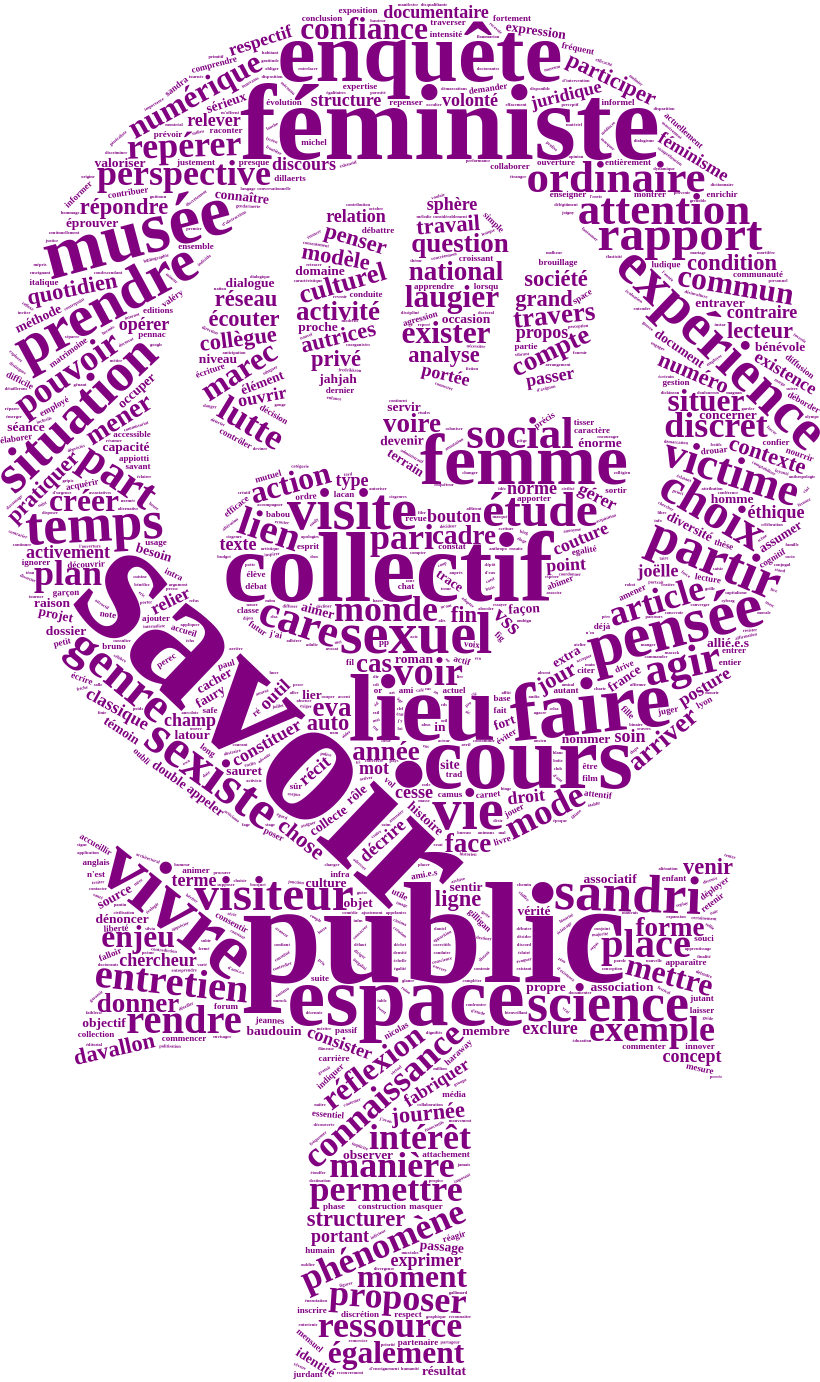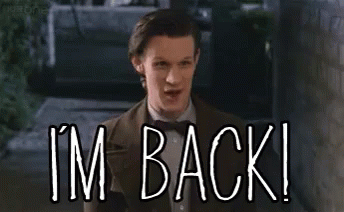
|
Wordcloud pour illustrer un articleLibrairies library(tidyverse) library(tidytext) library(pdftools) library(proustr) library(stopwords) library("mixr") # Lise Vaudor package library(magick) library(wordcloud2) Récupérer le texte du PDF Avec la fonction pdf_text du package pdf_tools txt <- pdf_text("Article Revue Balisages_Joëlle Le Marec et Eva Sandri_25 octobre 2022.pdf") On obtient ainsi un chr de 17 éléments (correspondants aux 17 pages) Une question se pose, qu’est ce que je garde, pourquoi, comment ? Est ce que j’enlève titre et abstract ? noms d’autrice, biblio ? |
Saut d'R : Data Science with R blog

|
La Gazette, mon petit canard : ConcoursConcours de la Gazette de Montpellier Le jeu-concours : racontez-nous, sur le thème “La Gazette, mon petit canard”, une histoire ou anecdote que vous inspire La Gazette : texte (court), poème, chanson, vidéo, rap, histoire drôle, tableau, sculpture… Laissez parler votre créativité. Les créations les plus originales, amusantes, pertinentes, émouvantes, acides, délirantes,… gagneront l’un des 35 lots. Surprenez-nous ! Envoyez votre production (texte, vidéo, photo, etc.) par mail à jb. |

|
Imprimer 4 images en portrait sur un A4Ou Dès fois Ubuntu, c’’est un peu relou… Mais heureusement il y a R L’idée, c’est de mettre 4 images en portrait sur une feuille A4 parce que personne a décidé de coder ça dans le truc d’impression d’Ubuntu 😕. Allez au boulot, on sort les 📦 et c’est parti ! On commence par lire l’image (1.png c’est la sortie Canva jme suis pas foulée), et la mettre dans img. |

|
Come back... in French :PMise à jour Voilà, voilà, depuis le dernier post y a 4 ans il s’est passé beaucoup de choses, je mettrais le “About” à jour parcequ’il est vraiment à revoir 😅 J’ai carrément tout repris à zero, crée un nouveau repo Github. J’ai donc recrée un blog tout vide, puis tenté d’avoir le même aspect que l’ancien… Nous voilà donc 2 jours plus tard 😅 Si tu veux plus de détails tu peux aller voir les 25 commits que j’ai fait pour en arriver là 😅 |

|
Analysis of Umbrella Academy's scripts - Part 1The bible of text mining with R (by Julia Silge and David Robinson) is very, very helpful ! I would like to see the evolution of the characters through the episodes but the scripts that I found no permit to do this because they don’t precise who is speaking 😞. Well, you have the scripts in a data frame, but not very tidy. library(tidyverse) library(tidytext) Words frequency df <- readRDS("df.RDS") %>% mutate(episode_number = str_extract(episodes_titles, "\\d*"), # extract 1 chiffre ou plus episode_title = str_extract(episodes_titles, "(? |

|
Scraping Umbrella Academy's scriptsWhy Umbrella Academy ? I’m a big fan of Ellen Page ! I really love her 😍. Juno is one of my favorite movies, no, actually it’s even my favorite movie. Besides, the soundtrack is my ⏰ 🎶. So I had to watch this series, and it is awesome ! (Okay, maybe I’m a little biased). I’ve only seen the first five episodes so far. I’m taking my time because I know I’ll be super sad 😭 when I’m done with the season. |

|
R-Ladies MeetupR-Ladies Montpellier meetups Since december 2018, I co-organise with Criscely the R-Ladies Montpellier meetups. You can follow R-Ladies Montpellier on twitter and github. Here are my slides, made with xaringan and the R-Ladies theme: Meetup 1 : little talk about Tidyverse : Meetup 2 : Let’s code TogetheR - Tidyverse Exercises : You can find the complete code of the slides here. And I’m going to write a post very soon with some useful tips for making xaringan slides, like how to make header and footer, how to insert interactive plots made with plotly or gganimate. |

|
AmstRday's tweetsThese lines of code have been lying around in a file for more than 2 months. I wrote them after SatRdays Amsterdam in September. Packages installation library(tidyverse) library(rtweet) library(knitr) library(kableExtra) library(ggiraph) library(magick) library(tidytext) library(wordcloud) library(widyr) library(igraph) library(ggraph) library(ggmap) library(maps) library(plotly) Scraping the tweets # rt_AmsteRday <- search_tweets( # "#AmsteRday", n = 2, include_rts = FALSE # ) # rt <- rt_AmsteRday # # vect <- c("#AmstRday", "#satRday", "#satRdays", "#satRdayAMS", "#satRdaysAMS") # # for( vec in vect){ # # rt_vec <- search_tweets( # vec, n = 18000, include_rts = FALSE # ) # rt <- bind_rows(rt, rt_vec) # } # # # rt <- rt %>% # unique() # # saveRDS(rt, "conttweets. |

|
Playing with dplyr5000 - Part 1dplyr5000 is a data package with the 5000 first travis builds of dplyr. I would like to make a beautiful barplot with these data, inspired by this tweet from Mara Averick. 📷 Further adventures in ggplot2 x-axis image labels… "Images as x-axis labels (updated)" ✏️ @carroll_jono "photo alignment with graph in r" (SO answer) @ClausWilkehttps://t.co/p8Tvs4sghn #rstats #dataviz /* ⛹️📊 atrocities mine, obvs */ pic.twitter.com/Wew5Wo9q4f — Mara Averick (@dataandme) October 11, 2018 Packages gh allows to get data from github. |

|
Making an animated ggplotI decide to talk about how I make my awesome blog banner in this first post. 😄 Why this banner ? It’s a french wordplay with my family name Sauder => Saut d’R (R jump in english). That’s why I decided to make a banner with the R-logo jumping on some (so cool) stickers. I choose stickers of packages that I use to do this animated ggplot. Which packages ? library(tidyverse) # install. |